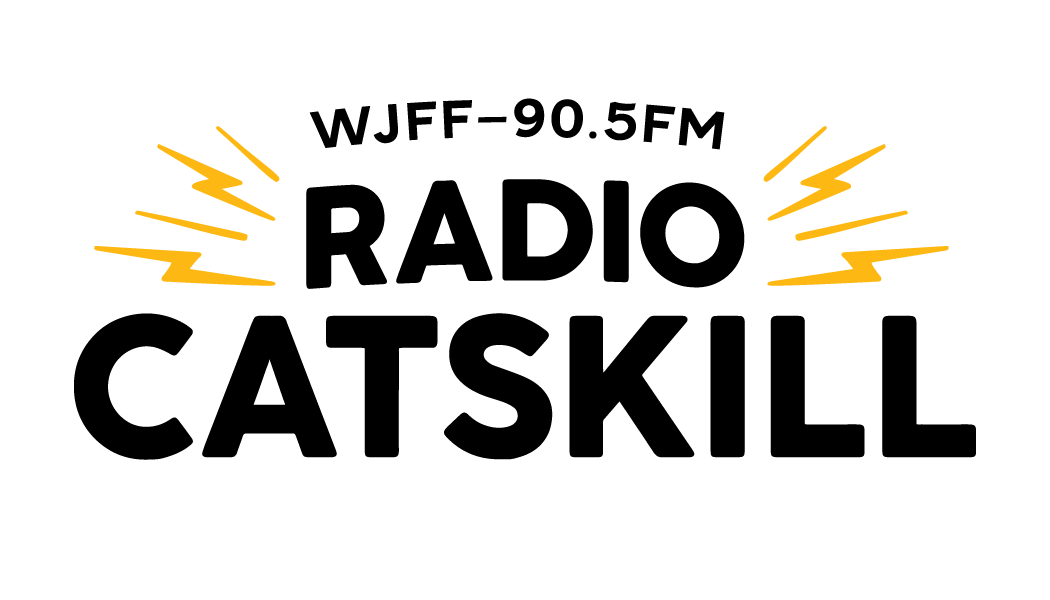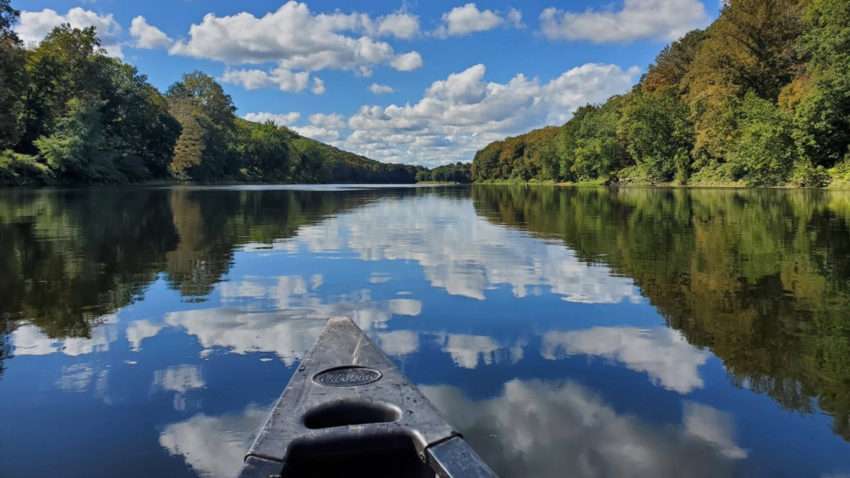For the eight million people who live within the Delaware River Watershed and the additional nine million people who rely on the river for their freshwater, the watershed serves as a critical lifeline. The area, which includes portions of New York, New Jersey, Pennsylvania and Delaware, contains nine national parks and 400 miles of river that are designated as National Wild and Scenic Rivers — with the free-flowing Delaware being home to unique ecotypes such as the endangered Atlantic sturgeon alongside the American eel and American shad.
Now it’s under attack.
In a press statement released on July 16, Delaware Riverkeeper Network, a non-profit established in 1988 with the mission of protecting the Delaware River, established a “Pledge of Resistance and Protection” against increasing efforts, spurred by the Trump administration, to overturn the watershed’s ban on fracking . These pro-fracking efforts have also been coupled with two other issues outlined by Delaware Riverkeeper— legislative attempts to wrest control away from the Delaware River Basin Commission (DRBC), the governing body of the watershed created to protect the watershed, as well as attacks against the DRBC’s DEI and climate change programs.
Delaware Riverkeeper Network Deputy Director Tracy Carluccio told Radio Catskill that concerns were first sparked by a March meeting between Congressman Rob Bresnahan—who represents Wayne and Pike counties—Environmental Protection Agency (EPA) Administrator Lee Zeldin, and local pro-fracking advocates to discuss ways to challenge the fracking ban.
This meeting was one piece of a larger plan to transform the state into a center for AI development. According to The River Reporter, the recent Pennsylvania Energy and Innovation Summit hosted by Senator Dave McCormick announced $90 billion in investments towards developing natural gas and data center infrastructure, with $25 billion specifically earmarked for natural gas power generation in Wayne and Pike counties. Trump was in attendance at the summit, aligning with his administration’s push to dismantle environmental protections and privatize natural resources for energy development. Senator McCormick has also been working on creating a $7 billion LNG export terminal on the Delaware River, having met with Penn America Energy Holdings in March to discuss its construction.
Pennsylvania is the second largest producer of natural gas in the country, and about one-third of the Delaware River Watershed is built upon the Marcellus and Utica Shales, which are the main sources for fracking in the state. But the process of fracking poses significant risks to the natural environment, which had driven the DRBC to institute the initial ban on fracking in 2021, Carluccio said. In addition to fracking releasing methane, a greenhouse gas 86 times more powerful than carbon dioxide in warming the planet and which constitutes about 97% of natural gas, the actual liquid that is injected into the shale and the resulting wastewater is highly polluted with radioactivity and heavy metals.
“What they end up doing is basically giving permits to pollute to companies to treat it to a certain amount and then release it,” Carluccio said. “When they do studies of the sediments downstream from some of these wastewater facilities that are supposedly treating the wastewater and making it safe, they find high levels of radioactivity in the sediments[…] And this is really a degradation, a spiral downward of our entire environment because that radioactivity gets into the fish, it gets into the food chain, and it gets into the water itself, and affects those who drink from the river downstream as well as those who eat the fish or are exposed to it through the air.”
The extensive amount of water used towards making the fracking liquid has its own host of negative effects on the flow of waterways as well. Signature species like the American eel require a free-flowing river to make the migration from their birthplace, the Sargasso Sea, to their final destination in the upper Delaware. While water is not currently being taken out of the Delaware River for this purpose, it still remains legal to do so.
“So what happens is they are taking water out of the hydrologic system because when they take that water and then they frack it, number one, it never comes back in the same quality that it came back in as we discussed because it’s mixed with wastewater and it has all those chemicals in it,” Carluccio said. “But also a lot of the water is trapped underground. It doesn’t come back up. So what’s happening is you are actually losing the amount of water, and it’s only about 10% that comes back up […] So over time, we’re reducing the ability of. The natural hydrologic system to replenish our waterways and replace what fracking is using.”
Water quality remains essential for a watershed that supplies millions of people with drinking water. Catskill Mountainkeeper Environmental Justice Coordinator Taylor Jaffe said the Pepacton, Neversink and Cannonsville Reservoirs in New York serve as particularly critical sources for residents in the Catskills, and fortunately, in addition to the DRBC’s, New York has its own fracking ban. Beyond providing freshwater, the watershed’s recreational opportunities have served to bring billions of dollars in ecotourism for local economies and have come to cultivate the very communities that line the river, Jaffe explained.
“Fly fishing was invented in the Catskills region, and it’s so important to the character of the communities here,” Jaffe said.”So if we’re talking about something that stands to threaten our waterways, of course that would pollute them, hurt our fish. And that is just one example of like, ‘here’s this thing that is so sacred to all the communities out here’ — whether it’s leisure, whether it’s how you’re obtaining a source of nutrition, whether it’s just your culture. It might just be that your great-great-grandfather started fly fishing and this has been something that’s passed down.”
And for residents in the four states that comprise the watershed, the risks of fracking directly extend to them. Fracking’s degradation of air and water quality has been linked to respiratory problems, neurological issues and even childhood cancers, according to Carluccio. And the health risks of pollution have been disproportionately concentrated in low-income communities and communities of color — whom oil and gas companies have historically made into sacrifice zones for energy development, Jaffe explained.
“I really want to make sure that folks understand that when we’re talking about environmental justice, we’re looking at the intersection of how race and income impact either the environmental benefits or burdens that a community is living with,” Jaffe said.” First, fracking developers often prey on low income communities and communities of color to site these frack pads and wells […] and that resulted in those communities becoming the front lines of contamination and poisoning. The second piece that I wanna point out is that areas where fracking has happened and the consequences are there — all of that contamination, all of that poison is there — they become less valuable places to live in terms of property value. So if you have the means to move out, you’re likely to move out because your health is at risk, and that means that people who don’t have the means to move out can’t. And it also means that sometimes folks who can’t afford now to live in this community where prices have just went up, they might get pushed into these contaminated places.”
The DRBC did unanimously pass a resolution created by the Army Corps of Engineers, the federal representative for the commission, in June that vowed federal funding must not be used towards any programs “that advance the principles of diversity, equity and inclusion” at the shock of organizations like Delaware Riverkeeper Network and Catskill Mountainkeeper, both of whom are a part of the Delaware River Frack Ban and Climate Action Coalition and have signed onto the pledge, which now has 1,020 signatures. Carluccio speculated that the DRBC must have thought the potential loss of federal funding would be detrimental, but she said she questioned its necessity. The federal government has only contributed to the DRBC’s budget a total of three times — in 1996, 2023 and 2024 — amounting to $17.1 million owed after having agreed to pay 20% of the commission’s annual costs back in 1988, according to NJ Spotlight News.
The same resolution also stated that federal funding could not be used for programs explicitly addressing climate change, but whether or not the DRBC wants to recognize it, Carluccio said the watershed and its residents are already feeling its impacts.
“The Upper Delaware has experienced it through flooding, we have experienced it through storm surges, we have experienced it through sea level rise in the lower part of the Delaware,” Carluccio said. “We’re very concerned about the intrusion of salt as it moves up river and the effect of that on water intakes for over 2 million people in New Jersey and Pennsylvania who get their water directly from the Delaware River intakes […] In the upper Delaware last year, many farmers came out to the DRBC meeting and talked about how it’s affecting agricultural practices and making things more difficult. We had experienced a drought last year.”
The resolution was passed amid federal efforts to shift control from the DRBC to the federal government. A tactic of ‘intimidation’ — Carluccio said Representatives Bresnahan and Scott Perry introduced a bill that would review the DRBC alongside two other compact commissions, but their end goal of actually taking the reins of the DRBC will be difficult to accomplish.
“There is absolutely no movement that we have seen, and statements from Delaware River Basin Commission confirm that there is absolutely no movement to try and undo the fracking ban or to give up any of the authority or jurisdiction that the DRBC has over the watershed,” Carluccio said. “And that’s very important that we make sure that there is not an effort made behind closed doors or in public by the federal government to try to wrest control away because watershed planning is what has improved the Delaware River, and it has allowed for all communities to participate equally. And we cannot allow that to slip away, and we won’t let that slip away.”
Image: The Delaware Water Gap National Recreation Area (Photo credit: nps.gov / J. Grier)
Note: This story was updated on August 11 to correct “Pepin” to “Pepacton” reservoir.


Perhaps I missed it, but the liquid which comes back up is polluted not just by the chemicals injected but also by materials in the earth – yes, radioactivity but also heavy metals. Drillers used to keep secret the chemicals in the liquid they pump in the wells. Perhaps that has changed. The holding ponds where the waste water is stored regularly burst or overflow. Pennsylvania potholes? Water hauling trucks on rural roads slow traffic and add to the potholes. Employment created is almost all for experienced drillers from out of state. The local jobs created are mostly as truck drivers and security. And the out of staters put pressure on housing, roads, schools (if their children accompany them). They DO provide income for “female entertainment.” local or itinerant. Before fracking was banned in Wayne County, a local noted that you could tell the farmers who had leased their rights – they had new wide screen TV’s and pickup trucks. Finally, the report only touches on the fact that residents of NYC drink Delaware River water and NYC does not have special equipment to deal with the pollution which would result. I suspect NYC is our greatest friend in this respect. A lot of these comments go back to a speech I gave in Vienna, Austria (yes – amazing) to US Ambassadors and other State Department officials. Perhaps 10 years ago. Fortunately, I represented the point of view of affected land owners. All the other presenters were industry experts.